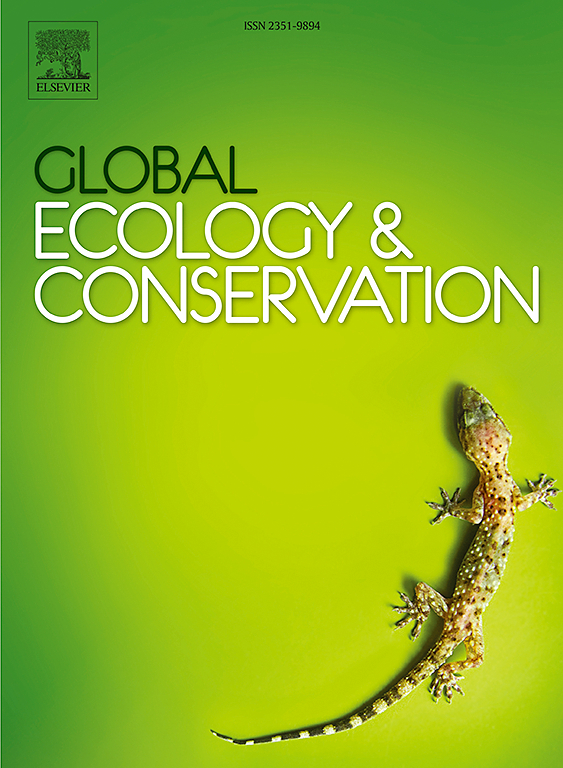Evaluation of impact of climate extremes on vegetation change in Southwest China considering time-lag effect
IF 3.5
2区 环境科学与生态学
Q1 BIODIVERSITY CONSERVATION
引用次数: 0
Abstract
The occurrence of extreme climate phenomena has markedly increased due to the rising trend in global temperatures, leading to significant changes in plant distribution and behavior. This trend is particularly evident in Southwest China, a region highly sensitive to climate shifts and frequently exposed to extreme climate events. However, the impact of the time-lag effect on vegetation is often overlooked. In this study, daily temperature (maximum and minimum) and precipitation data were used to calculate nine extreme climate indices. These indices were then employed to evaluate their impact on vegetation dynamics in the region. Subsequently, MODIS NDVI data were used to explore the correlations and time-lag effects between these extreme climate indices and vegetation changes. The analysis revealed significant annual and monthly growth rates in the regional average NDVI from 2000 to 2020, with R² determination coefficients of 0.06 and 0.94, respectively. Most extreme climate indices exhibited a strong positive correlation with NDVI on a monthly scale. A significant correlation was observed between extreme precipitation index and vegetation index in croplands and grasslands. There was a significant 0–2-month lag in the correlation between NDVI and extreme precipitation indices, whereas the correlation between NDVI and extreme temperature indices was more pronounced, with a lag of approximately 4–6 months. Ultimately, our study identified a stronger correlation between precipitation indices and NDVI, highlighting the necessity for increased attention to intense precipitation in the southwest to protect vegetation growth in the region. These findings provide a robust scientific basis for the proactive management of vegetation in Southwest China in response to future extreme climate events.
求助全文
约1分钟内获得全文
求助全文
来源期刊

Global Ecology and Conservation
Agricultural and Biological Sciences-Ecology, Evolution, Behavior and Systematics
CiteScore
8.10
自引率
5.00%
发文量
346
审稿时长
83 days
期刊介绍:
Global Ecology and Conservation is a peer-reviewed, open-access journal covering all sub-disciplines of ecological and conservation science: from theory to practice, from molecules to ecosystems, from regional to global. The fields covered include: organismal, population, community, and ecosystem ecology; physiological, evolutionary, and behavioral ecology; and conservation science.
 求助内容:
求助内容: 应助结果提醒方式:
应助结果提醒方式:


